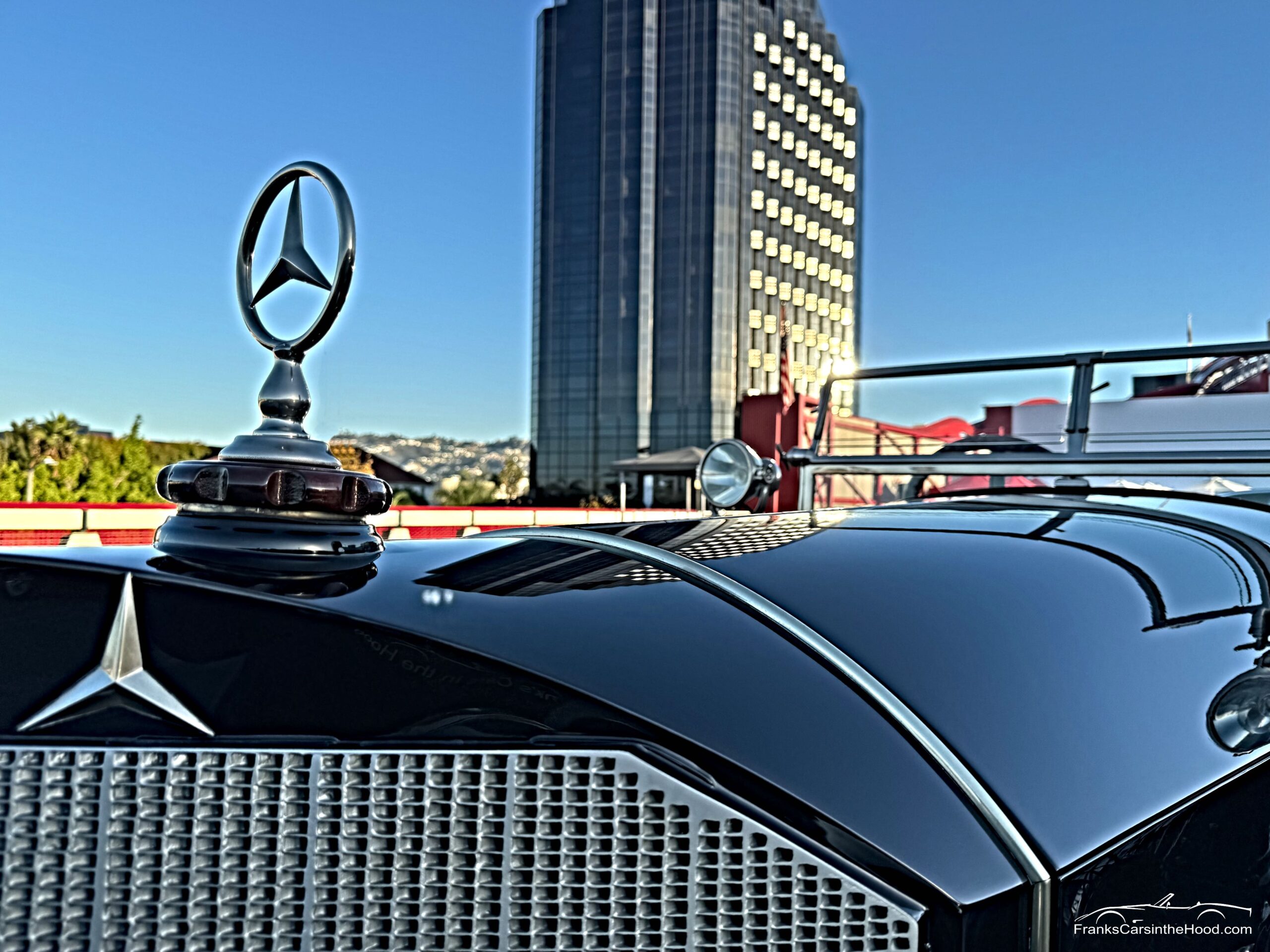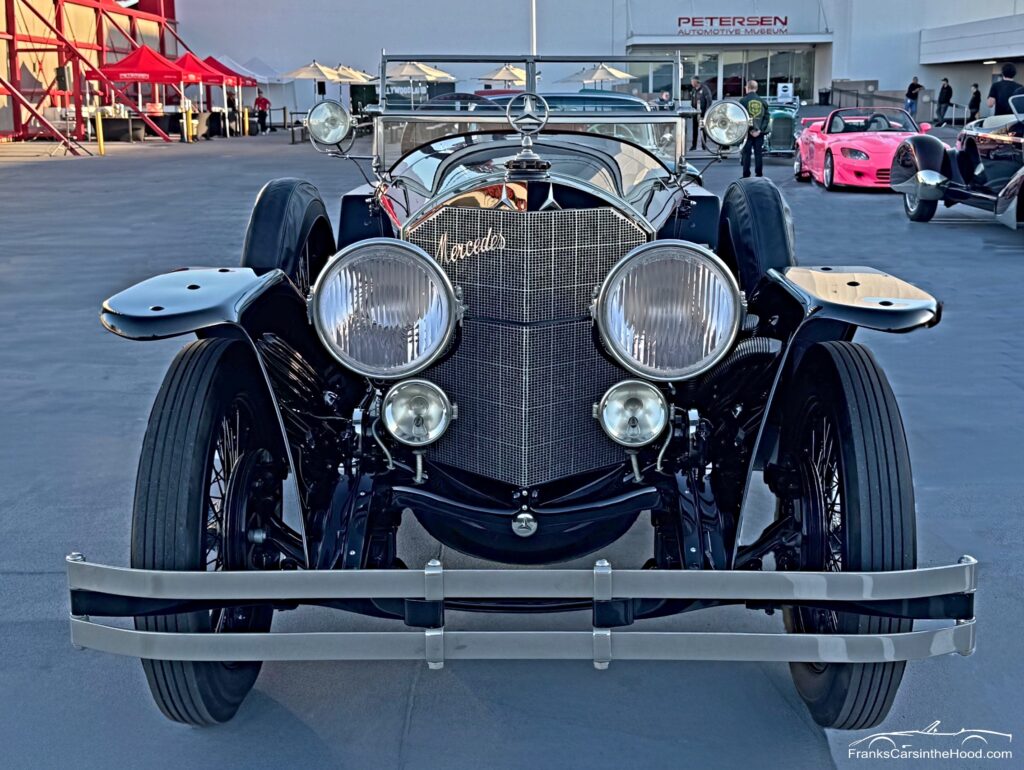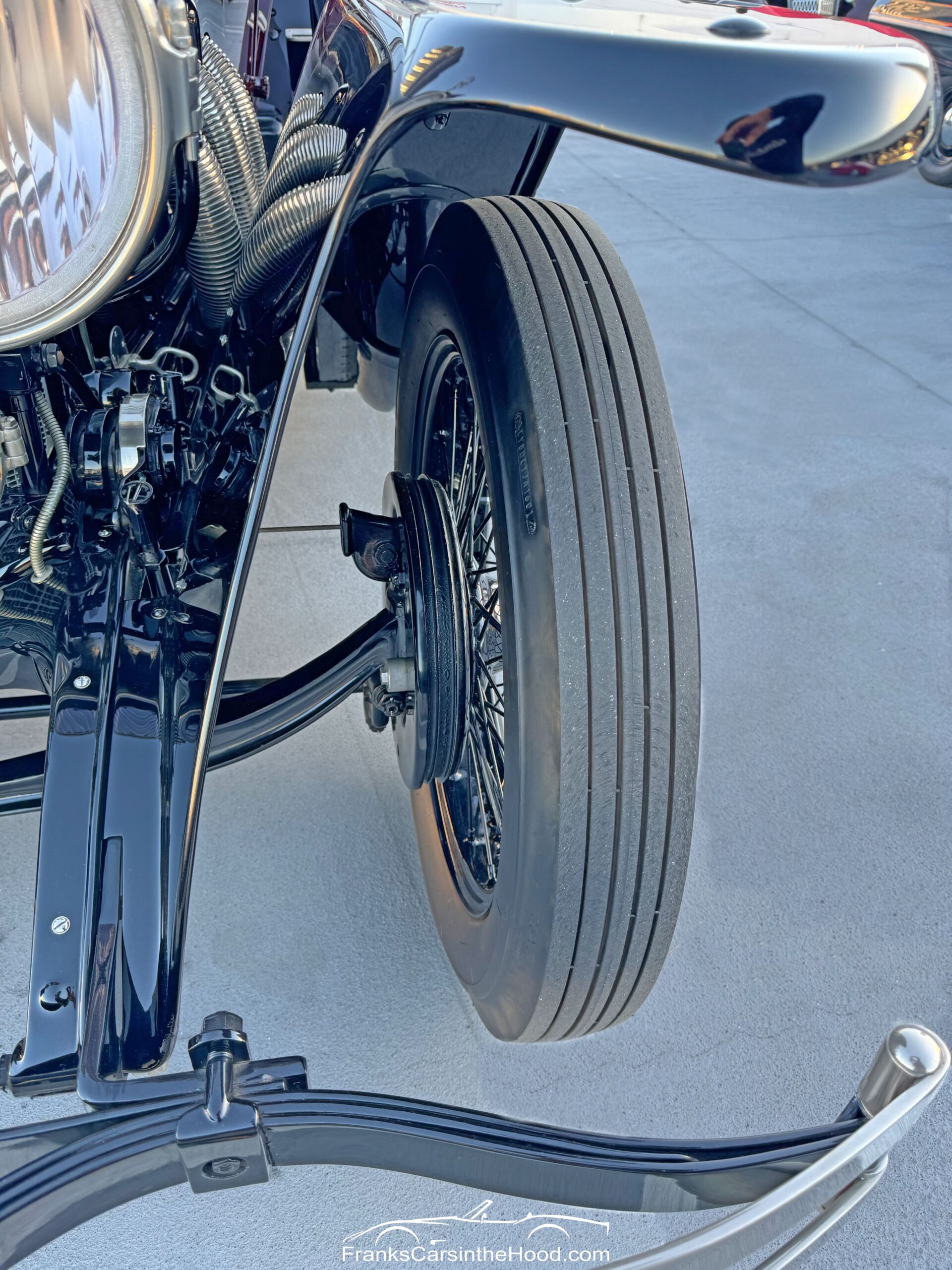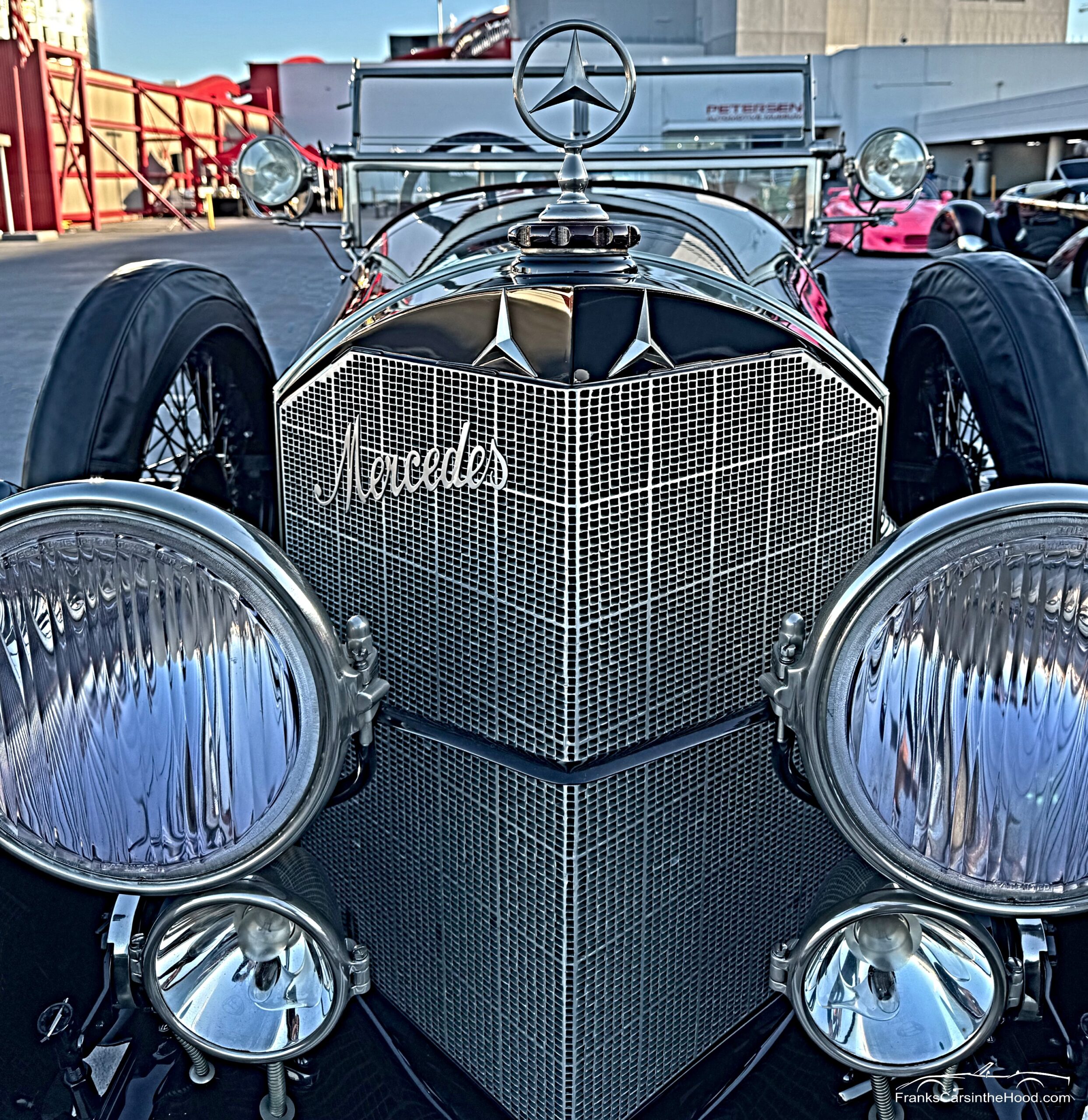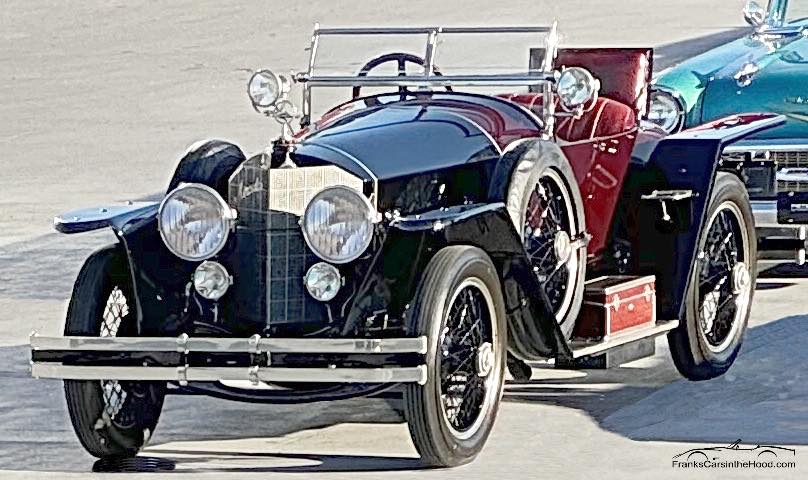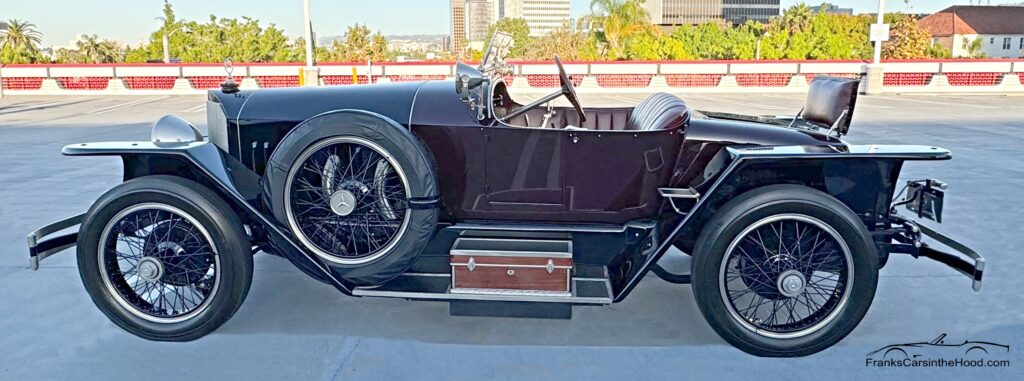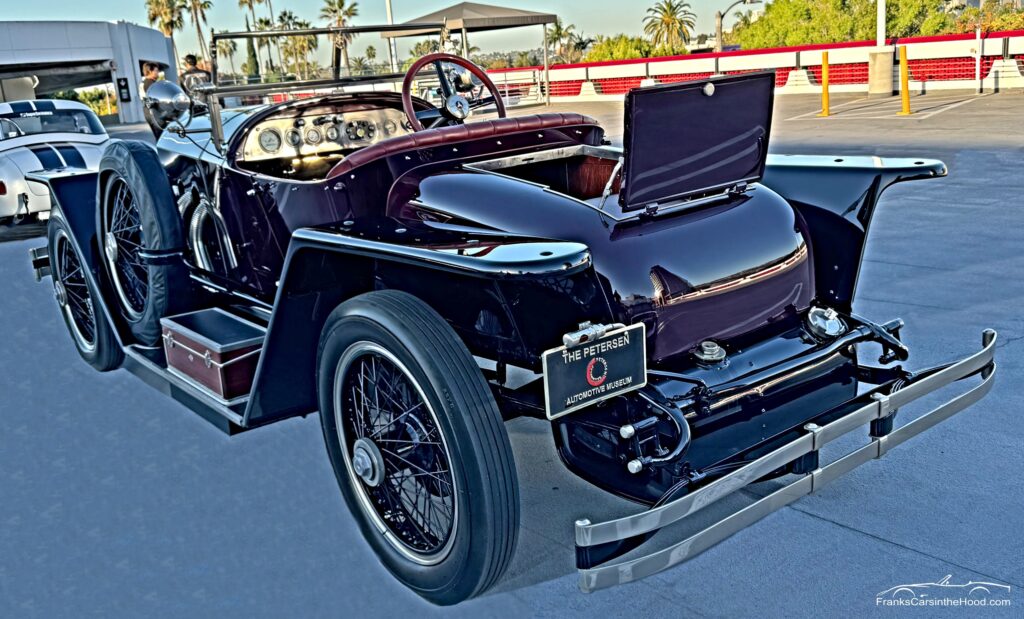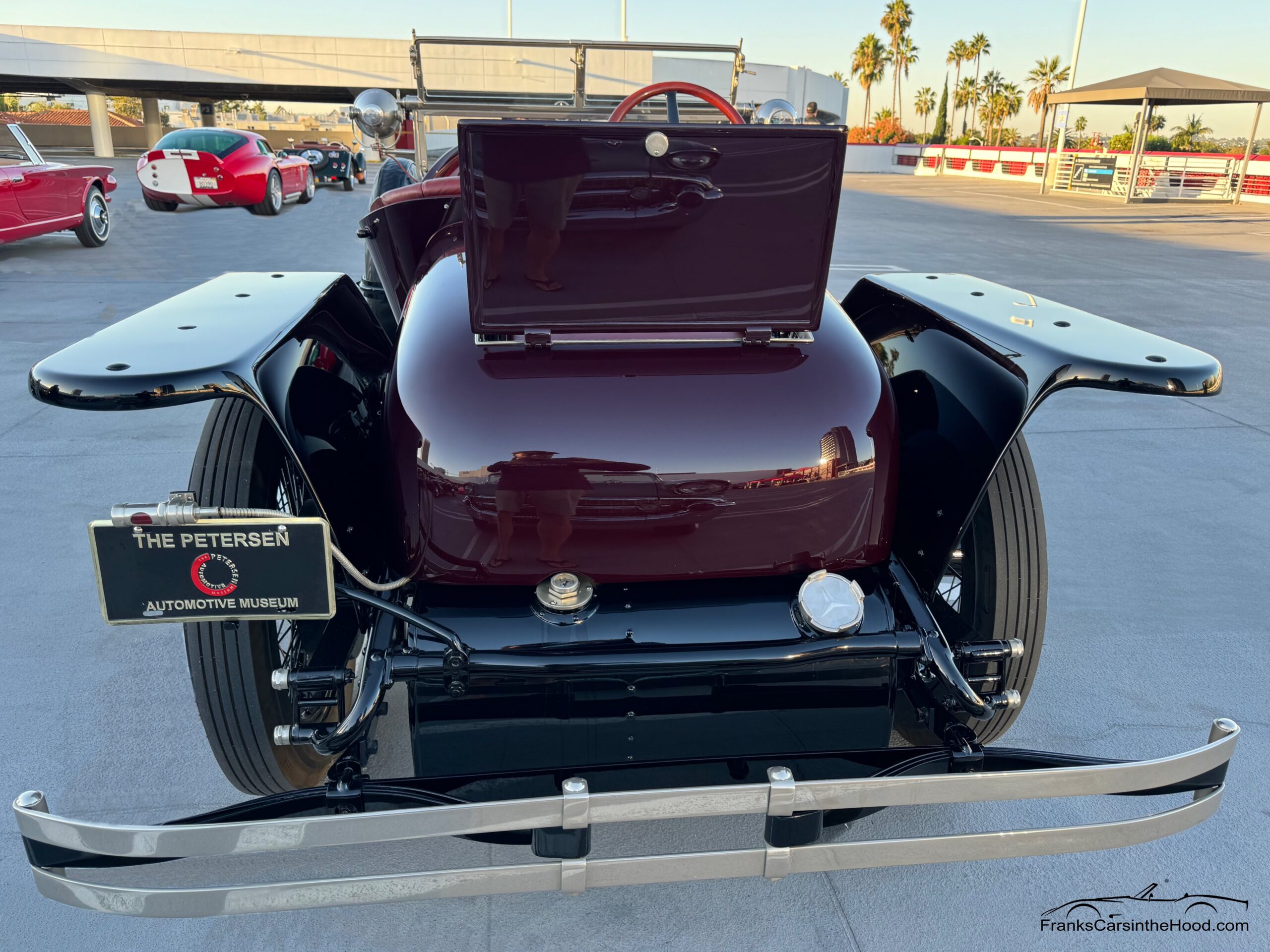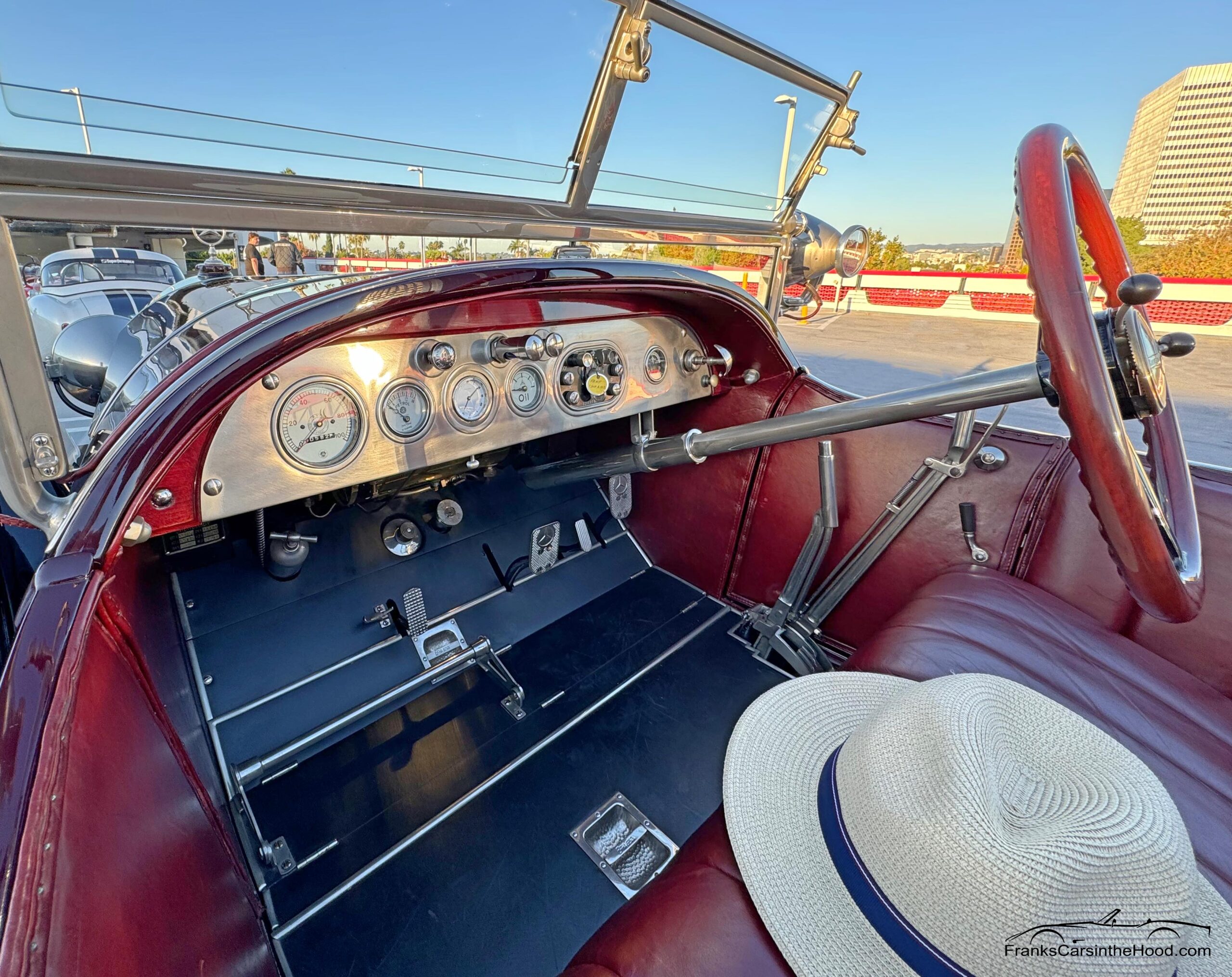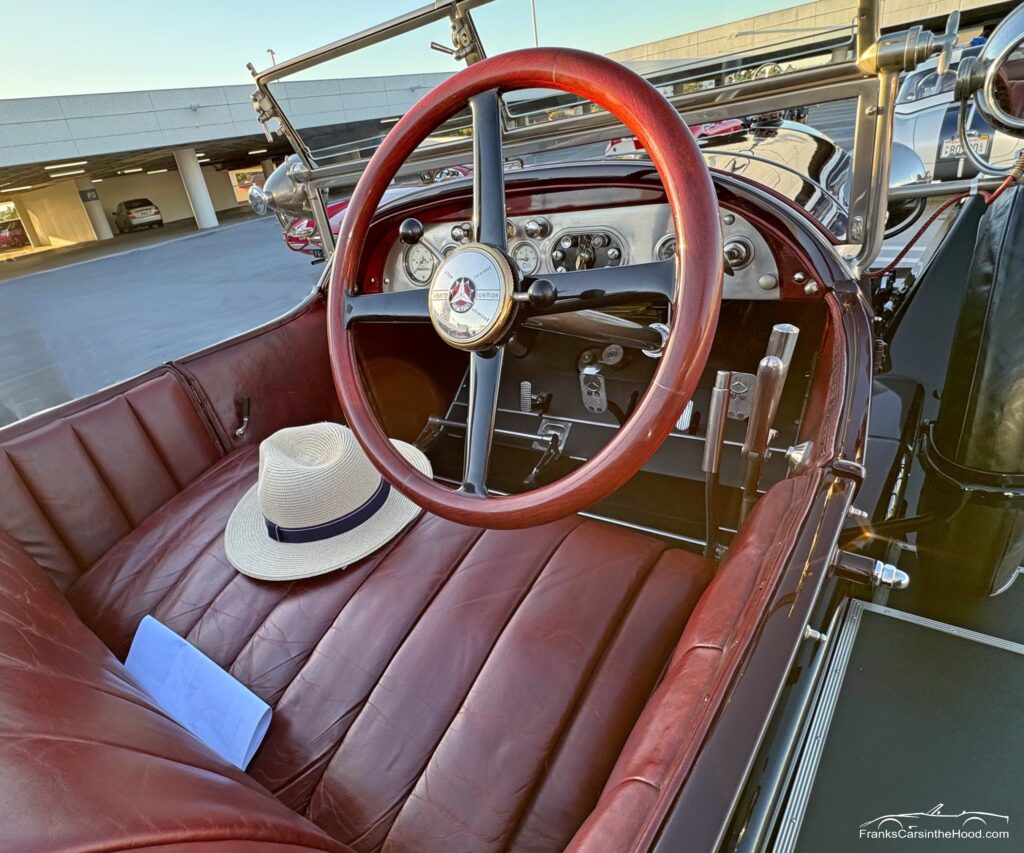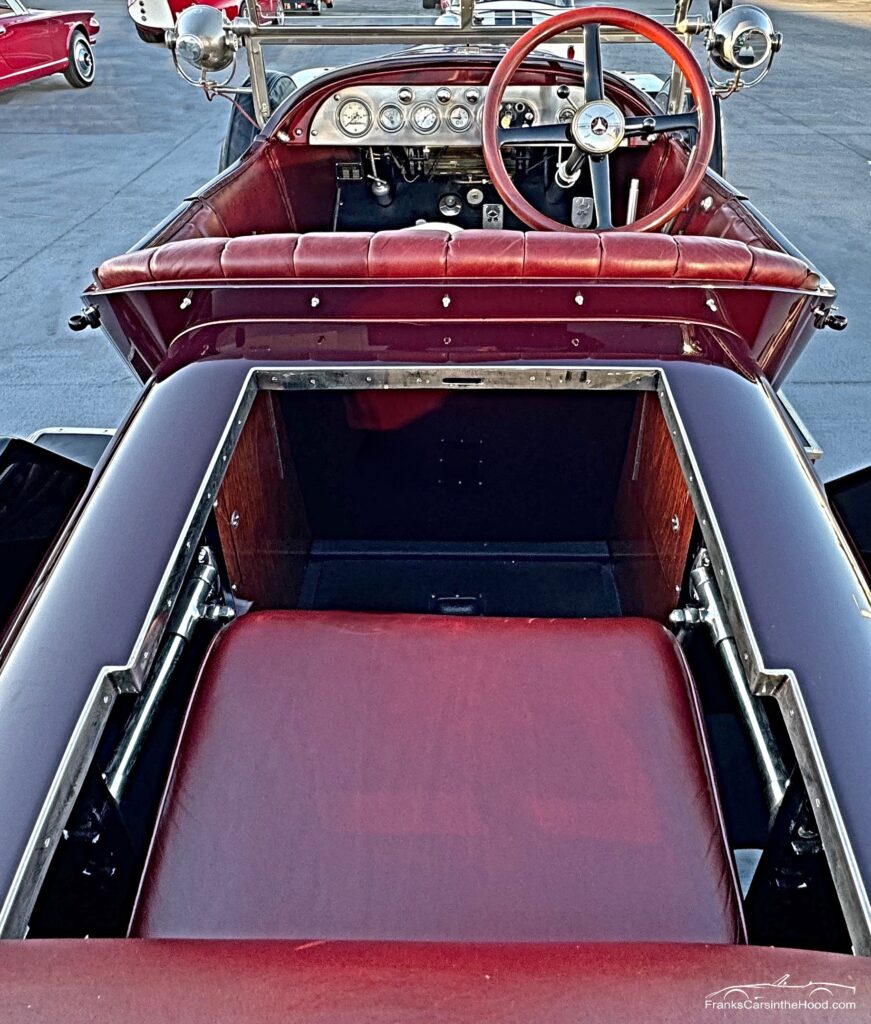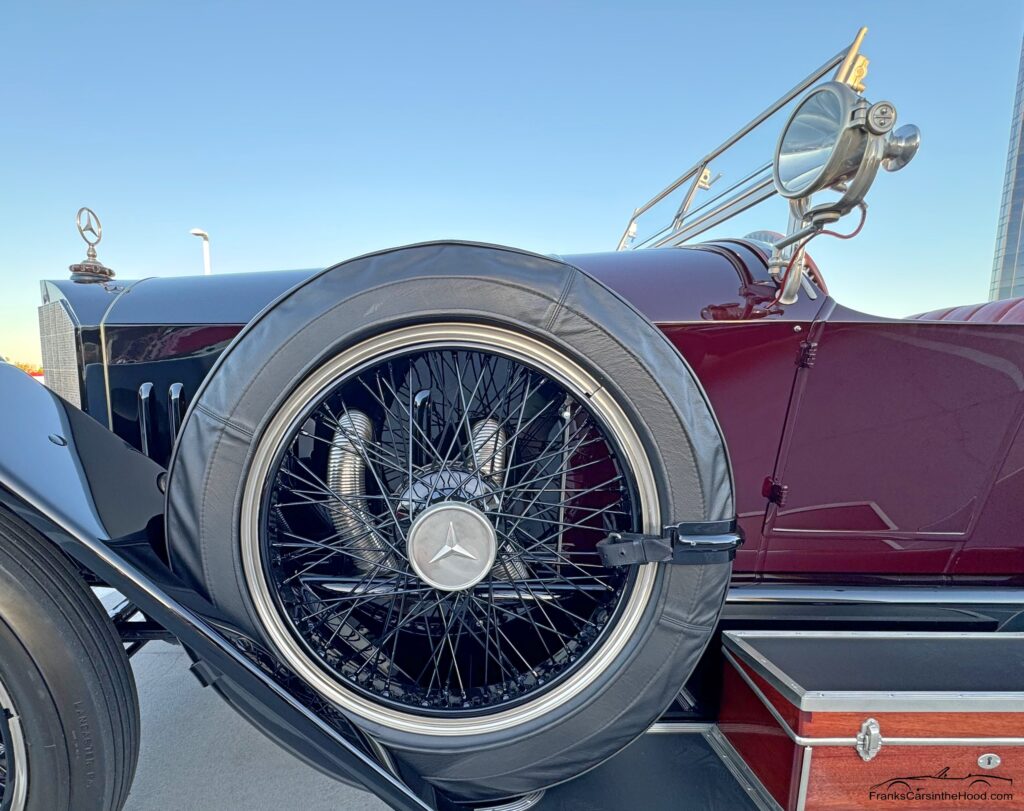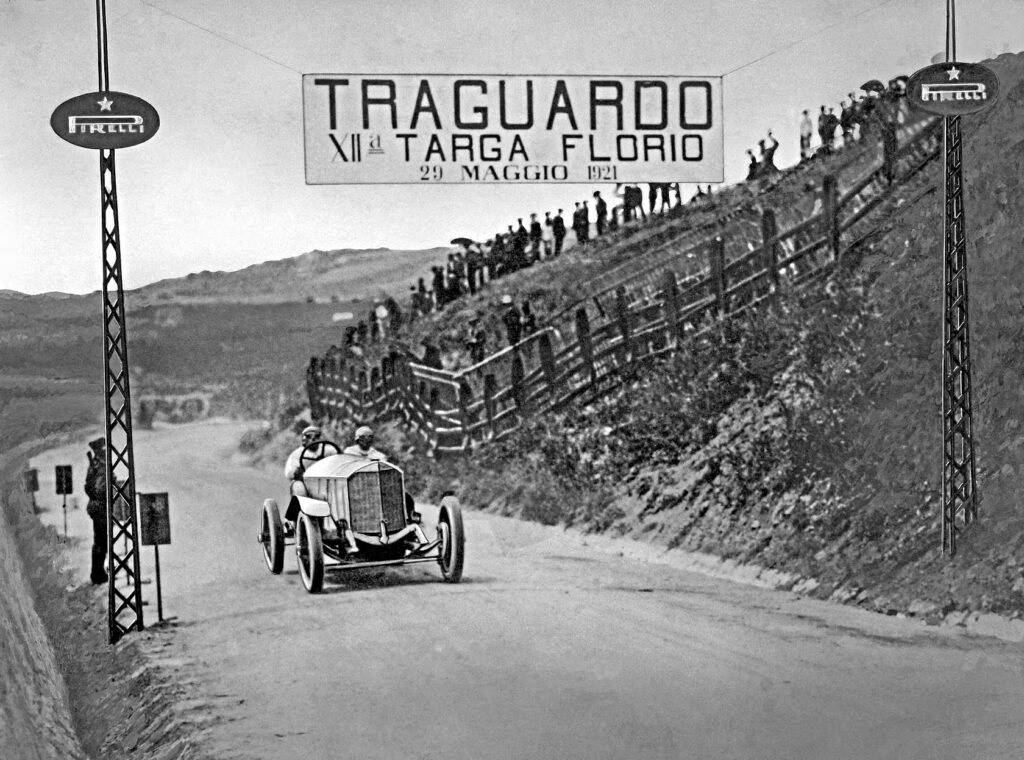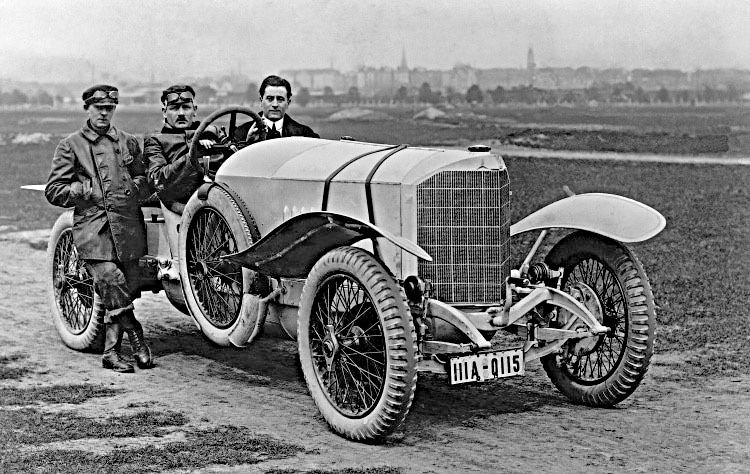Today’s car is a 1923 Mercedes 28/95 Targa Florio owned by Petersen Automotive Museum. I photographed this car at the Petersen Automotive Museum’s event that was “Celebrating 100 Years of Hollywood”. This was part of that event with a drive to the Hollywood Sign that began and returned to the Petersen Museum. The car is finished in two-tone black and burgundy with a dark red leather interior. It is powered by a 95 hp, 7.2 liter, inline 6 cylinder engine, inspired by Daimler’s aviation development, it features twin carburetors and mated to a 4-speed manual transmission. Slowing it down are Mechanical drum brakes in all 4-corners. It has solid front axle suspension with semi-elliptical leaf springs and friction dampers. The rear suspension is live axle with semi-elliptical leaf springs and friction dampers. The car is wearing Rudge-Whitworth spoke wheels
The Mercedes 28/95 were built from 1914- 1924 with nearly 600 produced. The 28/95 was one of the last models to be produced by Mercedes before the merger with Daimler-Benz in 1926 and was trademarked as Mercedes Benz. A small run, with omly 3 known to exist today, of the 28/95 roadster, a version of Max Sailer’s 28/95 SP Sport that were christened the Targa Florio after the successful class winning chassis in that famed race event in 1921 and 1922. This roadster were commissioned by the American Mercedes Company of New York City in 1923 and delivered in 1924.
By modifying the factory chassis by removing a full foot of length, adding flared fenders, lowered radiator, and a new carburetor, Max Sailer (driver/engineer) was off to race in the Sicily’s grueling off-road race, the 1921 Targa Florio. There he won second overall in the Targa, the fastest lap time, and a class win in the touring cars over 5 liters. According to Mercedes, adding to the challenges of this race were high temperatures and dust, as well as the great risk of tire punctures from hoof nails littering the road. In fact, it was this very same risk that hindered them from claiming the overall victory. In a sales bulletin from Mercedes, it stated “Max Sailer had to change tires nine times, while the absolute winner of the Targa, who arrived just two minutes ahead of him in a special Fiat racing car, did not have a single flat tire.” What was remarkable was despite the nine punctures, Sailer was able to complete the Targa Florio in 7 hours, 27 minutes, and 16.2 seconds, running an average speed of 39.85mph.
Apart from the tires, however, Sailer’s race car was extremely reliable under these extreme conditions. One particular innovation that made the Mercedes 28/95 PS Sport stand out was that it was the first vehicle from Mercedes to be equipped with four-wheel brakes. That system generated a noticeable improvement in braking power. The Mercedes 28/95 Sport success with four-wheel brakes’ is an excellent example of how racing directly affects new vehicle technology. The car had already proven its reliability on the journey to Sicily with the team driving the race car themselves from Stuttgart to the island at the southernmost tip of Italy, around 1243 miles.
What a great car with the race history in its lineage. This beautiful car is a show stopper where ever it goes. The perfect car for Concours d’Elegance events and is perfectly at its home at the Petersen Automobile Museum. It was great to see such a beautiful car in the parade on the drive to the Hollywood sign, at the Hollywood sign and back to the museum. What a great experience. Thank you for riding along. Frank
